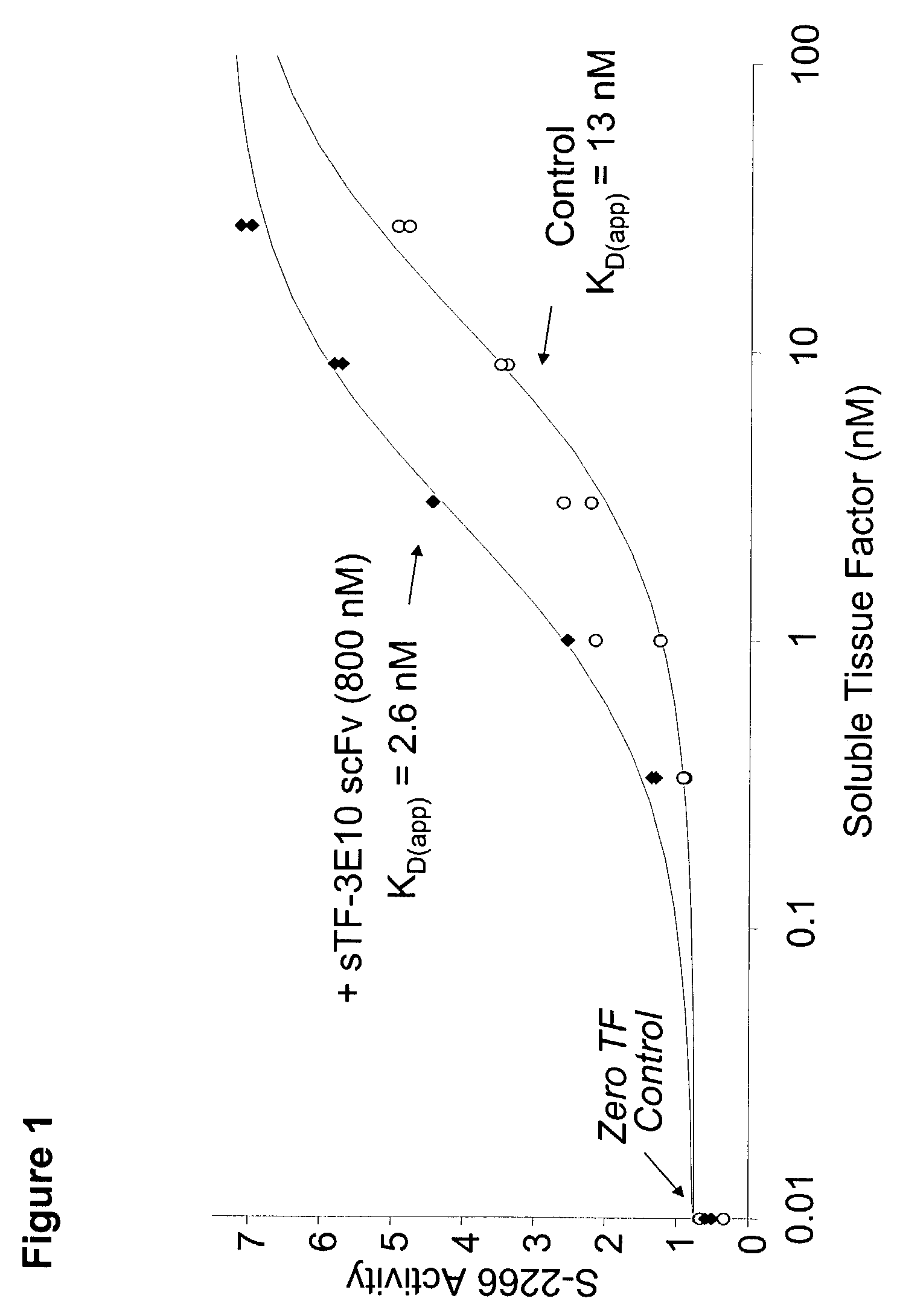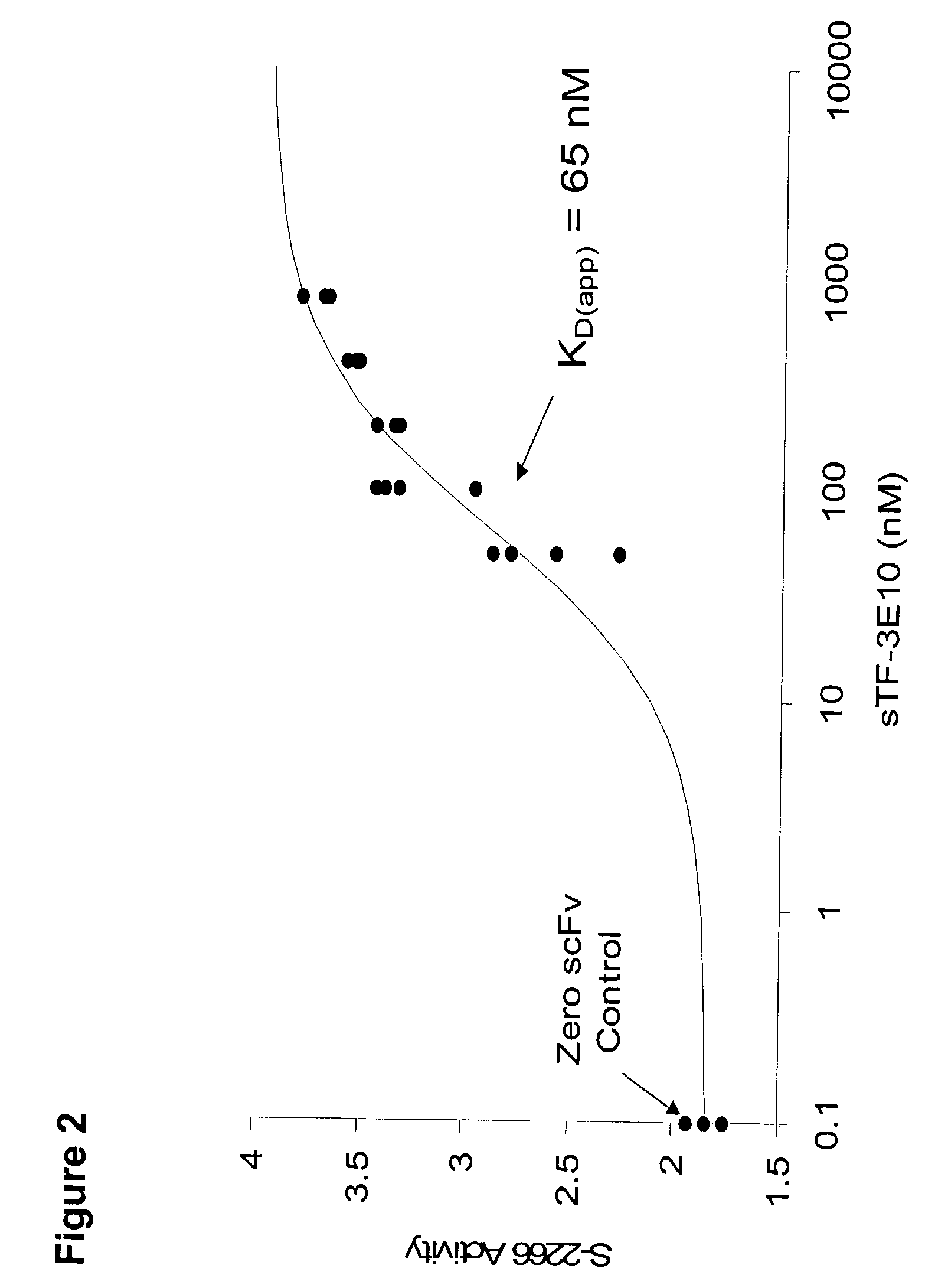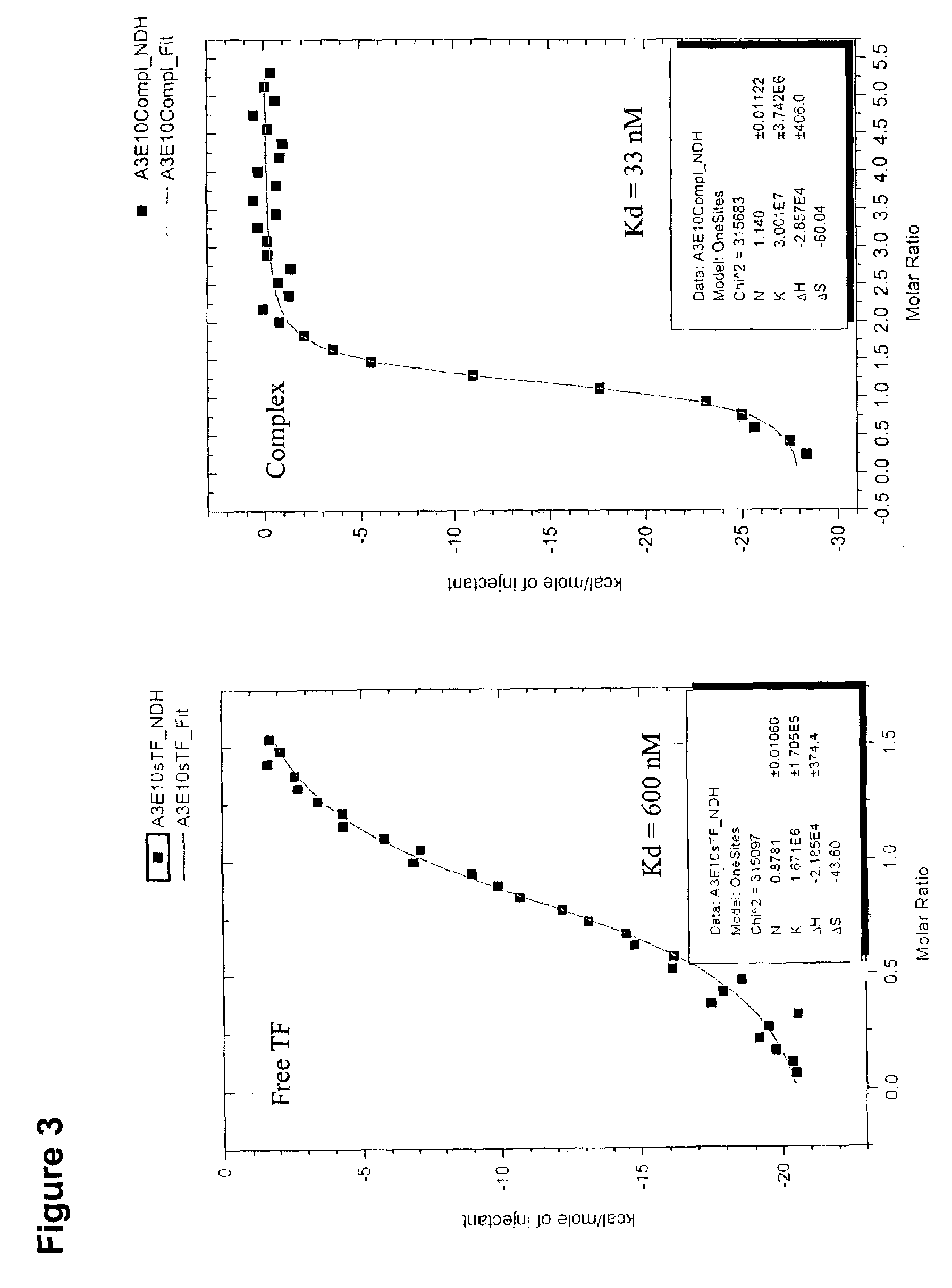Tissue factor targeted thrombomodulin fusion proteins as anticoagulants
- Summary
- Abstract
- Description
- Claims
- Application Information
AI Technical Summary
Benefits of technology
Problems solved by technology
Method used
Image
Examples
example 1
The Single Chain Anti-TF Antibody Construct scFv(TF)3e10
[0141]
(−18)MLGVLVLGALALAGLVFPEMAQVNLRESGGTLVQPGGSLRLSCAASGFSFTDAWMSWVRQAPGKELEWVSSISGSGGSTYYAGSVKGRFTISRDNSKNTLYLQMNSLRAEDTAVYYCARVLSLTDYYWYGMDVWGQGTLVTVSAGGGGSGAPNFMLTQPHSVSASPGKTVTISCTRSSGSVASYYVQWYQQRPGSSPTTVIYEDNHRPSGVPDRFSGSIDTSSNSASLTISGLKTEDEADYYCQSYDSNNLVVFGGGTKLTVLGAAAGAPVPYPDPLEPRAA(264)
[0142]
(−18) M L G V L V L G A L A L A G L V F P E M A QV N L R E S G G T L V Q P G G S L R L S C A A SG F S F T D A W M S W V R Q A P G K E L E W V SS I S G S G G S T Y Y A G S V K G R F T I S R DN S K N T L Y L Q M N S L R A E D T A V Y Y C AR V L S L T D Y Y W Y G M D V W G Q G T L V T VS A G G G G S G A P N F M L T Q P H S V S A S PQ R P G S S P T T V I Y E D N H R P S G V P D RF S G S I D T S S N S A S L T I S G L K T E D EA D Y Y C Q S Y D S N N L V V F G G G T K L T VL G A A A G G G G S G G G G S G G G G S V E P VD P C F R A N C E Y Q C Q P L N Q T S Y L C V CA E G F A P I P G E P H R C Q L F C N Q T A C PA D C D P N T Q A S C E ...
example 4
Expression of the Fusion Protein in Bacterial / Mammalian Cells
[0144]Bacterial expression was possible, but it yielded a protein that had a much reduced TM cofactor activity. The fusion protein was expressed in CHO cells. The expression plasmid contains both the hygromycin B and DHFR selection markers. Original selection was done in 400 μg / ml hygromycin to select a population. The resulting population was then subjected to 100 nM methotrexate selection. During this selection, cells that have amplified copies of the region of DNA containing the selection marker, and target gene, are selected from amongst the population. The expression levels were increased from approximately 0.3 mg / L to about 6 mg / L as a result of this selection.
example 5
In Vitro Assays
1. Protein C Activation Assay (Chromogenic)
[0145]This assay was performed by mixing 20 μl each of the following proteins in a microtiter plate: TM sample (unknown or standard), thrombin (3 nM), and protein C (1.5 μM). The assay diluent for each protein was 20 mM Tris-HCl, 0.1M NaCl, 2.5 mM CaCl2, 2.5 mg / ml BSA, pH 7.4. The wells were incubated for 2 hours at 37° C. after which protein C activation was terminated by the addition of 20 μl of hirudin (0.16 unit / μl 370 nM) in assay diluent and incubation for an additional 10 minutes.
[0146]The amount of activated protein C formed was detected by adding 100 μl of 1 mM S2266 (in assay diluent), and continuing to incubate the plate at 37° C. The absorbance at 405 nm in each well was read every 10 seconds for 30 minutes, using a Molecular Devices plate reader. The absorbance data was stored, and the change in absorbance per second (slope) in each well was calculated. The change absorbance per second is proportional to pmol / ml ...
PUM
 Login to View More
Login to View More Abstract
Description
Claims
Application Information
 Login to View More
Login to View More - R&D
- Intellectual Property
- Life Sciences
- Materials
- Tech Scout
- Unparalleled Data Quality
- Higher Quality Content
- 60% Fewer Hallucinations
Browse by: Latest US Patents, China's latest patents, Technical Efficacy Thesaurus, Application Domain, Technology Topic, Popular Technical Reports.
© 2025 PatSnap. All rights reserved.Legal|Privacy policy|Modern Slavery Act Transparency Statement|Sitemap|About US| Contact US: help@patsnap.com



